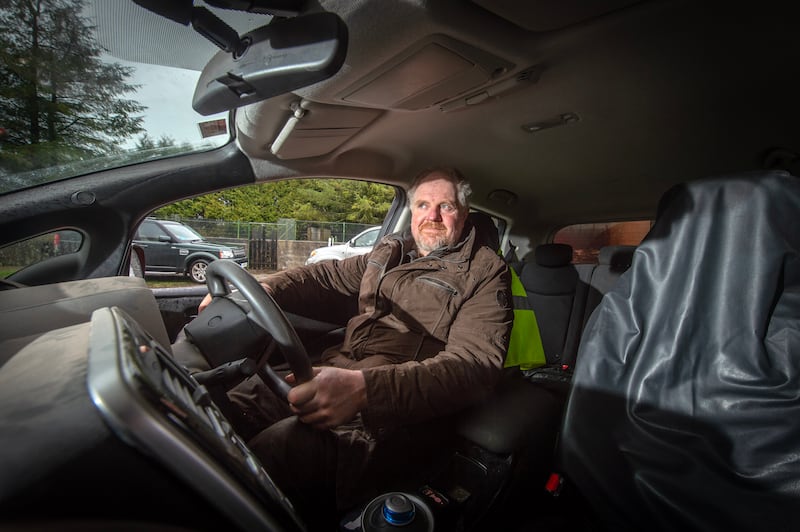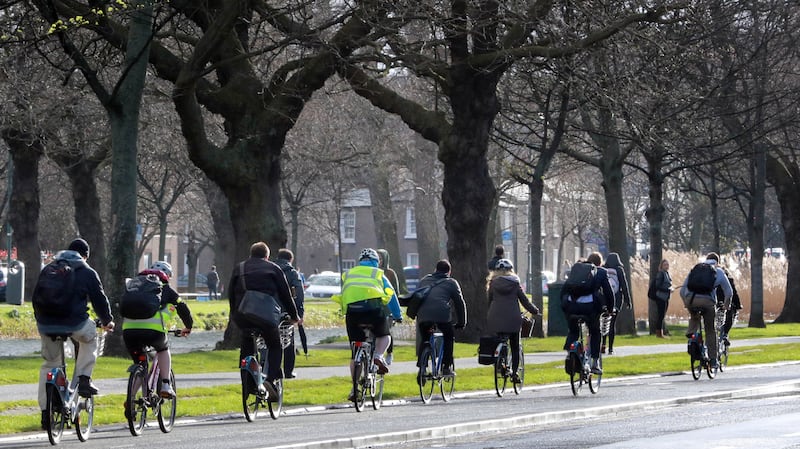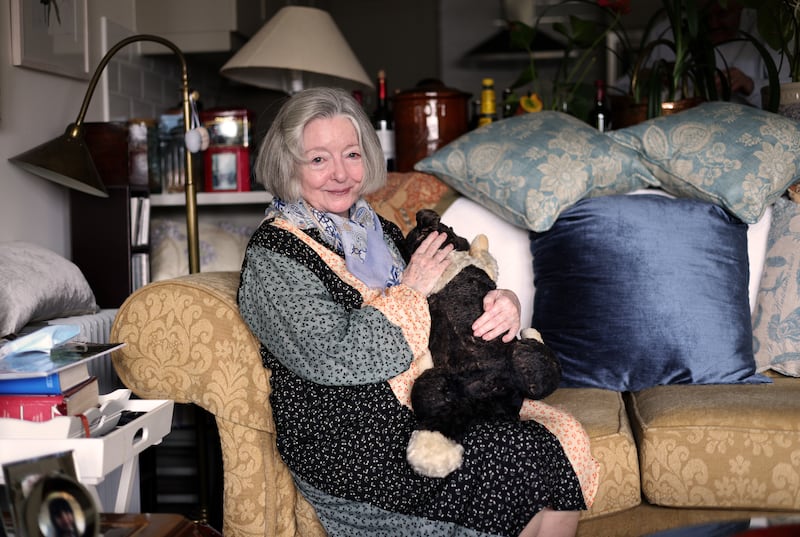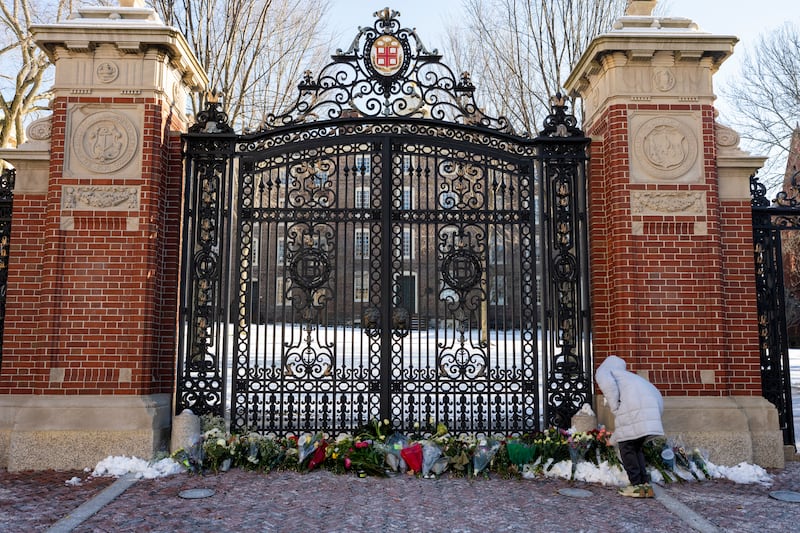A friend who is a loyal customer of the Irish public transport system tells a great yarn that sums up the adventures in sound and motion that can be part and parcel of travelling around Ireland. He was heading across country on a journey that required several bus changes. The route was plotted using the official timetable, but somewhere near Athlone, it became clear that he was running late for the final bus he was scheduled to catch for the West. He walked up the aisle to the bus driver as they rattled along through the interior and, showing him the timetable, explained his predicament. The bus driver gave a quick disparaging glance at the timetable and threw his eyes to heaven. “Don’t worry about that yoke,” he said.
“That bus won’t leave ‘til I get there.”
Everyone in Ireland has somewhere to go, but how to get there has never been a hotter topic for debate. The main arteries to the capital cities can be clogged from dawn to dusk. Galway city is a traffic black spot, with its impenetrable series of roundabouts. Only now is the fallacy of dismantling Ireland’s once-enviable train network becoming apparent. In rural Ireland – the catch-all term for anywhere outside the main cities – it can be dangerous to cycle and public transport is sporadic, meaning that a car – sometimes two cars – become a necessity in many households.
Green Party Minister for Transport Eamon Ryan brought an annexe to the climate plan to Cabinet on Tuesday marking the beginning of a year-long Governmental so-called ‘demand management strategy’ in transport to hasten Ireland’s achieving its emissions reductions targets. It coincides with the National Transport Authority’s just-published models for hitting those targets, including a 400 per cent increase on parking charges, a €10 daily charge for driving in cities, a 50 per cent reduction in public transportation fares and a lowering of all national road speed limits. It’s no modest proposal and will become the subject of hot exchanges inside and outside the Dáil.
READ MORE
[ Free public transport would incentivise excessive travel, says reportOpens in new window ]
Reports on the plans prompted a free-flowing response from Irish Times’ readers invited to share their views. Certain themes became clear. Transport – put simply, getting about the place – is an issue that matters to almost everybody. The majority are acutely conscious of the individual and collective need to play their part in combating the climate crisis. But the practicalities are greatly dependent on where people are living.
It becomes obvious, too, from the vast range of experiences and views that Ireland does not really have a transport “system” on a par with some European counterparts. It has options, often complex and impractical, for figuring out from how to get from A to B. But for many, the car seems to be the only option.

James Leahy and his family live in Co Cork. Although they are near the main road from Tallow to Midleton, the nearest bus service is 10 kilometres away. To leave the house they have three options: to go by foot, by bike or by car.
“And in saying that you couldn’t put the kids on a bike on the road outside our house. It is too fast and the roads are winding. It would be lethal, like,” Leahy says.
There are four children in the family ranging from third class to second year. The younger two love to cycle: Leahy will put their bikes in the back of their jeep and drive to a byroad so they can cycle in safety. A few years ago, the Leahys installed solar panels. After a year, they realised a lot of energy was going to waste so they bought an electric car, a Nissan Leaf, on Done Deal for €12,000. “We have free transport, almost, for most of the year.”
But they still need the jeep: on a family day out, there is not enough room in just one vehicle. A few weeks ago, for example, they headed to Waterford on a day trip in the two vehicles. Stopping to recharge the Leaf in Dungarvan, they found the six charge points either out of order or inaccessible. Just as well they had the Jeep.
Sometimes there is kind of a snobbery about public transport. People would rather drive into town rather than get a bus with other people
— Dave Spencer
“I finished up towing the car for a few miles until it could self-charge. Which is ridiculous, like,” says Leahy. Like many others, he says he would love the opportunity to take public transport more frequently.
“They should make the public transport more available and probably cheaper, too. It would be a huge advantage to tourism within the country. It would keep people at home if they can travel. Right now, you cannot do without a car.”
Ditching the car can be a brave step. It is one that the Spencer family decided to take a few years back. “It sort of happened slowly, over time,” explains Dave Spencer.
“We had one car which we didn’t use very much and didn’t like using. But it was in the background. The main thing we were using it for was that my wife thought she needed it for home visits in her job, which was seven kilometres away. And sometimes the home visits were within a 10-20 kilometre radius. Then we got a nice electric bike. And she found it was doable. And a few years ago, we said right, let’s get rid of the car.”
The decision was primarily based on environmental reasons and anytime they visit friends outside Dublin – by train and, when necessary, car hire – he is struck by the impossibility of life without a car. But, going car free has been a liberation. The family lives in Blackrock. Dave and his wife, Vanessa, decided “to keep everything in our lives pretty close by”.
“The kids play sport and we just decided they would join the nearest football club, the nearest pool is where they would swim, the nearest school is where they would go. You don’t want to be going more than 3 or 4km with kids on bikes when they are young. The only time it becomes problematic is when they are playing a match at weekends.”
To get around that, they carpool. If and when it is their turn to ferry some team-mates they hire through GoCar, a vehicle sharing company. The closest bus stop is a three-and-a-half minute walk from the house, with a bus to the city centre arriving every 12 minutes.
“I mean, I think that is fantastic,” he says.
“Sometimes there is kind of a snobbery about public transport. People would rather drive into town rather than get a bus with other people.”
I walk and cycle everywhere. It does limit my options a bit but I mostly don’t care
— Cian Ward
Some people, even friends, look at him askance when they learn there is no car at the house. Invariably, they have one big question: how do you do the shopping? That, too, meant a fairly simple switch from the tradition of piling the car boot with groceries once a week to nipping into the supermarket on a daily basis and filling one bag.
“I think it is more cost-effective, too. If you go into the shops every day – I love the reduced to clear section in shops. And sometimes I will base what we have for dinner based on what is on reduced to clear. We started off not having a car for environmental reasons. But if you look at the economics of it ... they reckon it’s a basic ten grand a year to own and run a car. So you save a small fortune and there are the health benefits of cycling. You are a little bit fitter and cleaner.”
There are days when he is cycling with the children to school when it is ferociously cold and wet – even if the Dublin rainfall is nothing like what is experienced in the west and north of Ireland. But even then, it is preferable. They invested in good weatherproof gear.
“It’s wet, yeah, and cold. But you are wrapped up and cycling past hundreds of cars that are not going anywhere. They might be sipping their lattes and listening to the radio but they aren’t going anywhere,” he says with a laugh.
When the Bradshaws moved to Mayo from Czech Republic, where they enjoyed a terrific public transport system, the couple were certain they could make things work with just one car. After all, they lived in Ballinrobe and did not have children to taxi everywhere. But the bus to attend college in Galway meant leaving before 7am to make the 10am start. The bus to Westport, where one of the Bradshaws worked, didn’t arrive until 11am, meaning one had to drop the other to work and then double back. They considered cycling but felt that it was too dangerous.
The people in Eamon Ryan’s constituency driving brand new jeeps are not impacted by fuel costs
— Irish Times reader
Cian Ward is 26 and lives in Cavan. He is adamant that he will never purchase a car. He got into a car-free existence while living in Dublin for seven years and is determined to keep it up.
“I walk and cycle everywhere. It does limit my options a bit but I mostly don’t care. I take a poor service bus to Cavan town and then a good service bus to Dublin when I want to be in the city. I would like to see and advocate for, cycle highways to places such as the local school 5km away from Arva town. It would’ve been great if I could have cycled to school every day when I was younger, instead of being driven everywhere. In short, I completely support these new measures and hope they’re enacted in full.”
The calls for a proper national biking infrastructure are general. Equally widespread is the belief that transport authorities do not adequately consider specific needs of their customers.
“Mr Ryan and Co are in a certain age category and in my opinion not considering our elderly and/or disabled citizens,” stated one reader, who wished to remain anonymous.
“Not everyone has access to a bus, Dart or Luas or indeed [is] in a position to use them. I use my car to get to places that I cannot access by bus (I am not near a Dart or Luas even though I live in Dublin). I have just one bus route which stops in a part of the city which is on one side and a 20-minute walk to the other side. I can’t carry shopping for this distance and there are no buses that I can connect with easily. I would use taxis more if they were less expensive and cleaner! I also don’t feel safe on the buses (nor the Dart, the last time I used it, there were people taking drugs openly in a busy carriage and everyone was too afraid to say anything).”

Other readers are fiercely opposed to the notion of being “forced” into a car-free existence by the Government. “Cars are not evil,” said another respondent.
Another said: “I’d rather have my toddlers screaming in the car than on a bus embarrassing me. Increase in parking charges at workplaces and shops is a cruel thing to do. Just this week the Government were celebrating Ireland’s low unemployment rate and now they want people to pay to park at work? No thank you. Employers will resist. Where is all this money coming from?
Young people today might get a buzz from going to New York – and many are probably fed up of that, too
— Madeleine Goacher
“Increasing the cost of fuel during a cost living of crisis and a global oil shortage just shows that [the] Green Party do indeed conform to the South Dublin mentality. The people in Eamon Ryan’s constituency driving brand new jeeps are not impacted by fuel costs. Improve public transport, high-speed rail, new roads and improvements to existing roads, etc. Getting rid of every car in Ireland will have no impact on climate change. During lockdown emissions fell down by 7 per cent. Every car in the country was parked during 2020. That says it all so it’s time for the Greens and the NTA to stop guilt tripping people.”
Idling for an hour or more in dense traffic is no fun. Neither is standing under ill-purposed plastic shelters that offer little or no protection to customers using the bus services in rural Ireland. The Irish train system has enjoyed a revival but is in need of modernisation – and the return of the trolley service, which has not had a run through the aisles since Covid. Passengers can buy food and drink on board the Enterprise service between Dublin and Belfast where catering services resumed last November.

In Kildare, Madeleine Goacher is one of the great believers in the train as the most magical form of transport available. Growing up in Mallow, Co Cork, she says, “the train was the thing that brought you freedom” in 1950s Ireland. “And even walking up to the station, the buzz of excitement started. You can’t imagine. Young people today might get a buzz from going to New York – and many are probably fed up of that, too. But then, to take a train was wonderful.” She contracted polio in 1947 but was able to drive a car until quite recently when her vision became “unreliable”. She is housebound for the moment but is determined to be out and about before too long. And her hope is that the Irish will return to train-transport in greater numbers.
“Naas had a station and closed it. The people can go to Sallins. Either they drive there – and there are not enough spaces – or they can get a feeder bus, which is inadequate for many people. A car will always be necessary for a portion of the population – in particular for those people who are unable to walk. If I am in Dublin I will need a car to get to the hospital. I hope and think they will cater. But I believe that now can be a time for a train revival.”
Her view is shared by citizens across Ireland. People want better bus routes, cycle infrastructure and alternative ways of getting about. What it would look like remains ill-defined by necessity: a hazy, utopian notion of a reliable, punctual, modern and affordable public service option, complete with modern comforts and operating with sufficient depth through the smaller parishes of Ireland so that not taking the car – or opting to choose to get rid of it altogether – becomes a real choice rather than an aspiration or ultimatum.
The path to that place will be slow, potholed and instanced by more than one bout of spectacular political and public road rage.
















